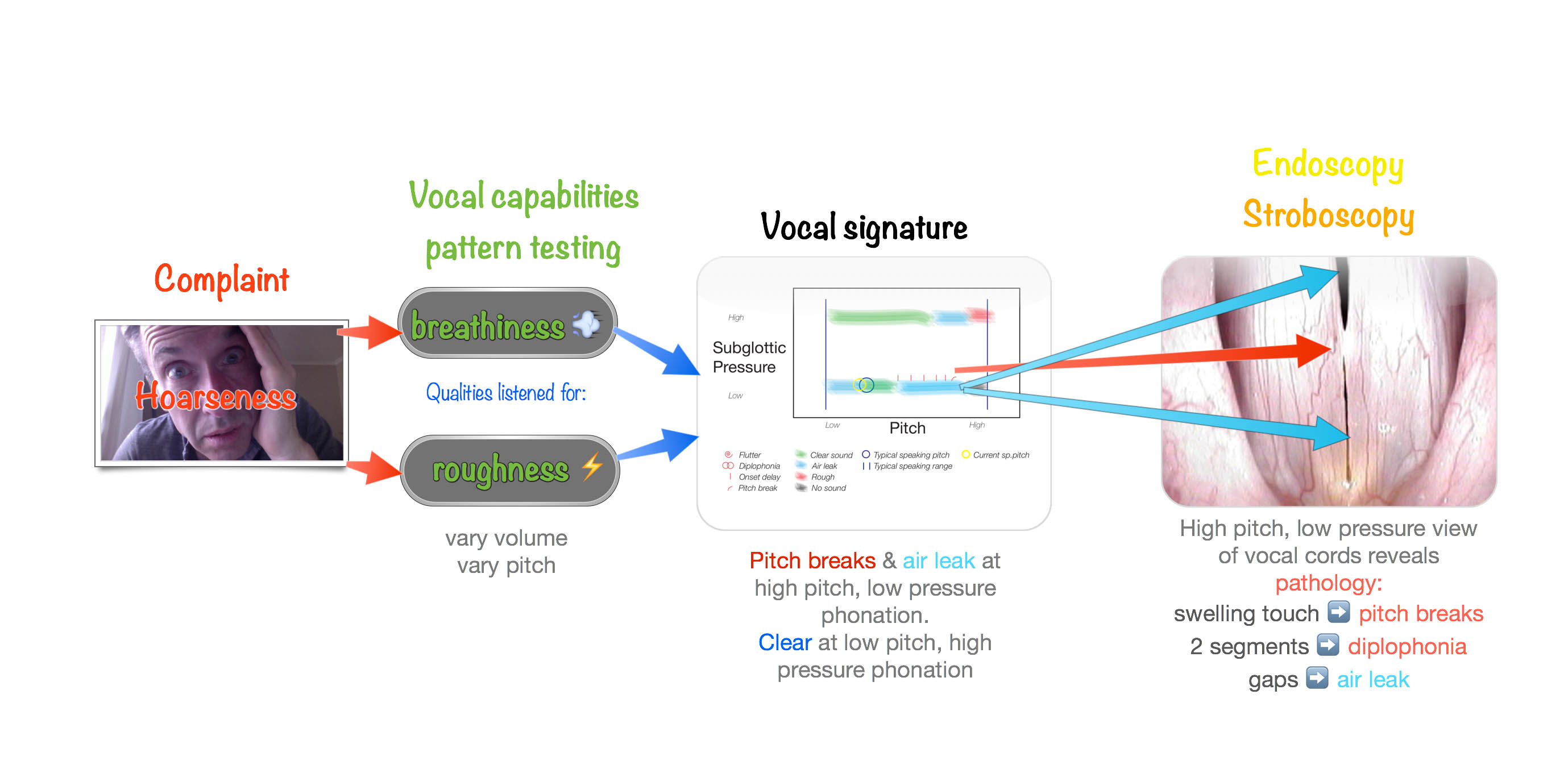Complete & adequate voice exam
Three part voice exam
Almost every type of physician-patient interaction begins with a history of the problem. The physician says, “Tell me what happened.” In laryngology, three things are accomplished simultaneously during the history. This history offers a great many clues about likely types of voice disorders based on when the hoarseness started, simultaneous events at the onset, the duration, the severity, changes with use and simultaneous breathing or swallowing problems. Secondly, the examiner gets to begin hearing the conversational voice for a period of time. Third, the patient highlights preconceived perceptions of her problem, which are also important for the physician to address later in the exam.
People who talk a lot will suffer from a different set of problems than people who are naturally quiet. People who lose their voice suddenly after yelling will have a different problem from those who lose it slowly over time.
The history is the first of a three part examination:
A three part examination has the same value as navigation at sea by triangulation. With only one point of reference, the sailor will know only the bearing or direction toward something, and with two points of reference she might be able to narrow her location on the map to a few possibilities, but with three references, the sailor can be almost certain of her exact location. Likewise, when all three portions of the laryngeal exam point to the same problem, the physician can say with great assurance, “This is the likely diagnosis.”
Summary

This three-part exam leads to confident diagnosis.
